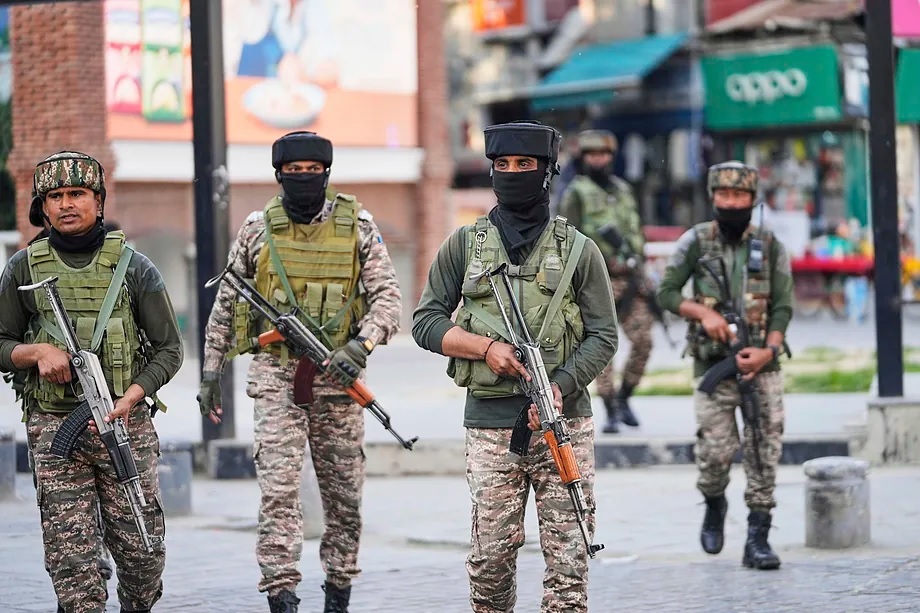India and Pakistan have been bombarded in recent days with Chinese and French missiles. They have used Russian artillery and Israeli drones. The most radical commentators on both sides were increasingly vocal in columns, debates, and social media advocating the use of the powerful nuclear arsenal to defeat the enemy. The two giants of the Indian subcontinent, frequent instigators of calculated military clashes, were this time spiraling out of control towards a large-scale war. Until yesterday, when the announcement of an immediate ceasefire came. A truce that was not first announced by either New Delhi or Islamabad. It was Donald Trump who took credit, revealing that the agreement had been made possible thanks to the mediation of United States.
While many Indian and Pakistani citizens celebrated the ceasefire enthusiastically, the international community, led by Washington, urged the two governments to meet at a neutral point to establish solid foundations for peace to prevent this dangerous military escalation from happening again.
As demonstrated this week, when they simultaneously deployed over a hundred combat aircraft in the air, if tensions escalate into a more open conflict at any point, both are heavily armed, although India has a significant advantage: its military budget is over nine times that of Pakistan (ranking fifth in the world in defense spending, around 76 billion euros, 2.3% of GDP) and has nearly 1.5 million active personnel, compared to Pakistan's nearly 600,000 operational soldiers, who spent around 10 billion in 2024, 2.7% of its GDP.
During the recent exchange of attacks, Pakistan boasted that its Chinese-made J-10C fighters shot down several Indian Rafale fighter jets, armed with air-to-ground cruise missiles acquired from France. The Pakistani army bombed Indian positions with JF-17 light fighters, also purchased from China, a country that supplies over 80% of Pakistan's imported weapons, while the Indian army launched drones made in Israel against cities in the neighboring country.
According to the Stockholm International Peace Research Institute (SIPRI), a leading defense research center, India has 2,229 combat aircraft, 3,151 tanks, and 283 ships. Pakistan has 1,399 aircraft, 1,839 tanks, and 121 naval assets. The latest SIPRI report details that, between 2020 and 2024, Delhi was the world's second-largest arms importer after Ukraine, with most of its purchases coming from Russia, one of its traditional allies. Islamabad is the fifth-largest arms importer.
Analysts point out that India has a larger and more modern military force, with the development, in collaboration with Russia, of long-range and cruise missiles, and a defense system ready to intercept ballistic missiles. The Pakistani side, despite being smaller, is more prepared in defensive and covert operations.
Both are more evenly matched in nuclear power, with around 170 warheads each, according to most international reports (neither party has confirmed the number or how many are deployed). "A nuclear exchange between India and Pakistan would cause millions of immediate deaths and have global consequences," comments Melissa Parke, director of the International Campaign to Abolish Nuclear Weapons (ICAN). The SIPRI report indicates that while Pakistan has been preparing its nuclear weapons for a possible war against its neighbor, New Delhi's deployment is mainly focused on its other major regional rival, China.
India maintains a firm policy of not being the first to use this arsenal, while Islamabad's generals have stated that their nuclear weapons may be necessary to deter India.
The now most populous country in the world established its nuclear program in the late 1950s with the help of the United States and Canada, who provided reactors and fuel with the commitment that they would not be used to make weapons. However, Delhi's physicists secretly transformed the fuel into plutonium, producing the fissile material for a nuclear explosion. India conducted its first nuclear test in a remote area of the northeast of the country in 1974.
Pakistan owes its program to a scientist named Abdul Qadir Khan, who worked in the 1970s for a nuclear engineering company in Amsterdam. There, he gained access to information on ultracentrifuges capable of enriching uranium, one of the main methods of producing material for a nuclear weapon. After his country's defeat in the third Indo-Pakistani war (1971) and India's first nuclear test, Khan offered Islamabad his knowledge and stolen documents to lead the nuclear program. In 1986, Pakistan announced that it had produced nuclear warheads, which were tested more than a decade later.
